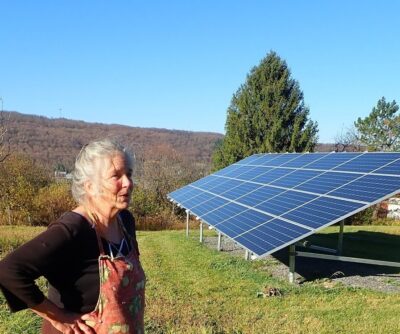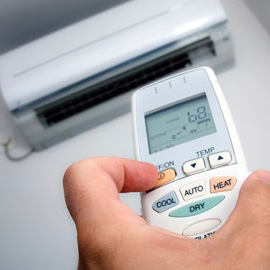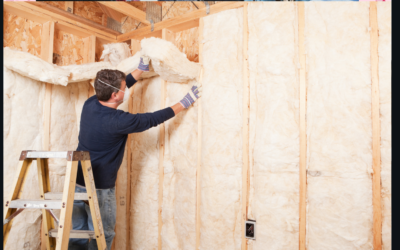 Energy efficiency upgrades and new heating and cooling systems are major financial investments in your home or building, but they are good investments, reducing your energy usage and keeping you and your family more comfortable. Grants, rebates, low-interest financing, and other incentives can help for all incomes whether you rent or own your home!
Energy efficiency upgrades and new heating and cooling systems are major financial investments in your home or building, but they are good investments, reducing your energy usage and keeping you and your family more comfortable. Grants, rebates, low-interest financing, and other incentives can help for all incomes whether you rent or own your home!
These incentives are for single family homes, or 2-4 family homes in some occasions. View programs for multifamily (5+ units), nonprofits, small commercial, and other large properties
No matter what you heat your home with, improving your home’s performance by accessing better insulation and air sealing to reduce drafts will make your home more comfortable, save you money on heating and cooling, and increase the health and safety of your home. Some incentive programs for heat pumps (for clean heating and cooling) also require you to meet certain levels of insulation in the home first, so improving your energy efficiency now will make your home “heat pump ready” in the future.
There are incentives for all income levels! Choose your household size (and county for single households) to see qualifying income levels for EmPower+ or Comfort Home. These programs focus on improving energy efficiency, health, and safety of a home, and can sometimes provide funding for heat pumps as well.
The Inflation Reduction Act (IRA) of 2022 represents the single largest investment in climate and energy in U.S. history, directing billions of dollars towards homeowners, renters, businesses, municipalities, and nonprofit organizations to lower the cost of clean energy technologies. Over the next decade, the IRA promises to grow New York’s clean energy economy and reduce greenhouse gas emissions to meet the goals of the Climate Act ![]() .
.
The IRA offers rebates, tax credits, and low-cost financing to make the switch from fossil-fueled appliances and equipment to new, clean electric models. New Yorkers can often combine these IRA benefits with State incentives and programs to maximize savings on electric vehicles, solar panels, energy efficiency upgrades, heat pumps, and more.
Since 2023, IRA tax credits have been available to all New Yorkers. New York State is in the process of rolling out IRA rebates, with initial funding available for income-eligible New Yorkers through the EmPower+ Program and Appliance Upgrade Program. Additional IRA rebates, including offers for multifamily buildings, will become available in 2025.
These incentives are currently available to EmPower+ Low Income and EmPower+ Moderate Income programs. A maximum of $14,000 per unit can be used with each eligible measure having a set incentive. Although you can keep applying for EmPower+, you can only use the IRA HEAR incentives per measure once. Additional point of sale rebates for heat pump clothes dryers and electric/induction cooking to come out Fall 2024 or later. IRA HEAR incentives for non-EmPower+ households are estimated to come out early 2025.

EmPower+ may provide funding for heat pumps, but houses must meet or surpass minimum insulation requirements, and it may depend on the fuel type being replaced and the expected energy savings. The $8000 Inflation Reduction Act rebate for low to moderate income households is accessed through EmPower+. A participating contractor will help determine if a heat pump is possible with this funding for your home.
These incentive tables are for National Grid, NYSEG, and RG&E territories. Visit CleanHeatNY for rebates in other areas of New York State. These are applicable for most building types (residential, commercial, nonprofit, industrial, etc.), and all current fuel types. Other than heat pump water heaters, heat pump technologies need to be installed by *NYS Clean Heat participating program contractors. If you are getting a heat pump using EmPower+ and/or IRA HEAR you cannot combine the NYS Clean Heat utility incentive at this time.
*Note: for non-major utility electric customers this is not a requirement, but recommended to ensure proper installation.
For the major utility NYS Clean Heat program, verify that your program contractor will apply for the heat pump rebate for you and so take that rebate off the total project cost for you. It is a best practice, but some contractors leave it to the customer to pay upfront and get the rebate later.
| System Type | Heating Capacity | Rebate |
|---|---|---|
| Cold Climate Air Source Heat Pump (ccASHP) | 90-120% ("full load") of heating load < 300,000 BTU/h | $1,200 per 10,000 BTU/h |
| Cold Climate Air Source Heat Pump (ccASHP) | 90-120% ("full load") of heating load < 300,000 BTU/h with integrated controls | $1,400 per 10,000 BTU/h |
| Cold Climate Air Source Heat Pump (ccASHP) | 90-120% ("full load") of heating load < 300,000 BTU/h with fossil fuel system completely removed ("decommissioned") | $1,600 per 10,000 BTU/h |
| Air to Water Heat Pump | 90-120% ("full load") of heating load <300,000 BTU/h | $1,600 per 10,000 BTU/h |
| Ground Source / Geothermal Heat Pump | < 300,000 BTU/h | $2,500 per 10,000 BTU/h |
| Custom Space Heating | > 300,000 (large buildings) $/MMBtu of annual energy savings | Custom incentive: $80 per MMBtu energy savings, or $100 per MMBtu for projects that include building envelope improvements |
| System Type | Capacity | Rebate |
|---|---|---|
| Heat Pump Water Heater (HPWH) | < 120 gallons | $1,000 per unit |
| Heat Pump Water Heater (HPWH) | > 120 gallons (commercial size) | $80 per MMBtu annual energy savings |
| Ground Source Heat Pump Water Heater | N/A | $900 per unit |
| Ground Source Heat Pump Desuperheater | N/A | $100 per unit |
For air source heat pump water heaters you can access the incentive whether it is installed with a NYS Clean Heat Contractor, other contractor, or if you do a self-install. A Clean Heat Contractor will apply for the rebate often for you. You can also apply for the rebate yourself via mail/online, or an instant rebate (*National Grid heat pump rebate link and NYSEG/RG&E rebate link). Instant rebates are currently available for purchases at Home Depot or Lowe’s (we do not endorse any companies).
The Inflation Reduction Act heat pump water heater rebate is accessed through EmPower+.
Municipal electric cooperatives who participate with IEEP offer a variety of rebates to their customers. Contact your utility about their current offerings. For IEEP the resident will apply for the rebate post-install. New construction is not applicable and gut rehabs should verify first with IEEP if they can access the incentive.
| System Type | Heating Capacity | Rebate | Details |
|---|---|---|---|
| Central Ducted Cold Climate Air Source Heat Pump (ccASHP) | Whole home system | $1,200 per system | Must be on NEEP List |
| Ductless Mini-split Cold Climate Air Source Heat Pump (ccASHP) | Whole home system | $800 per outdoor unit, max of $1200 | |
| Ductless Mini-split Cold Climate Air Source Heat Pump (ccASHP) | Partial home system | $800 per outdoor compressor (max. $2,400) | Must be on NEEP List |
| Ground Source Heat Pump (GSHP) | Whole home system | $2,000 per system | Must be EnergyStar certified |
| Heat Pump Water Heater (HPWH) | $750 per unit | Must be EnergyStar certified | |
| Ground Source Heat Pump Water Heater | $750 per unit | Must be EnergyStar certified | |
| Ground Source Heat Pump Desuperheater | $100 per unit | Must be EnergyStar certified |
Disclaimer: We are not tax professionals. The information on this website is intended for guidance only. There are particular standards and details that must be met; please consult with a tax professional.
 Energy Efficient Home Improvement Tax Credit (25C)
Energy Efficient Home Improvement Tax Credit (25C)Eligible measures include energy-efficient insulation, windows, doors, and similar energy-saving improvements, certain biomass stoves and boilers, electric panels and related equipment.
The Inflation Reduction Act of 2022 has increased the federal Residential Clean Energy Property Credit tax credit for ground source heat pumps, solar panels, and battery storage, etc. to up to 30% of the cost, with no cap, through 2032.
Existing homes and new construction qualify. Both principal residences and second homes qualify. Rentals do not qualify. Not all households are able to take the full 30%, it is limited by the amount of tax you owe, otherwise known as tax liability. This tax credit can roll over from year to year.
In 2022, the New York State Legislature passed an updated geothermal and solar state tax credit.
Not all households are able to take the full tax credit, it is limited by the amount of tax you owe, otherwise known as tax liability.
Property tax exemptions exist for residential energy efficiency upgrades including heat pumps.
Households participating in EmPower+, Comfort Home, using a participating heat pump contractor, or participating solar contractor are eligible to apply for NYSERDA lien-free, financing options. If you are a renter, your landlord can use these options. There are no dealer fees on NYSERDA loans.
If the property is located in a geo-eligible area, your household may qualify for the lower interest loan regardless of income. These loans are available for rental properties too. The interest rate is based on renter’s income.
Get an estimate of your interest rate on NYSERDA’s Residential Financing Options page.
The On-Bill Recovery Loan is a NYSERDA loan in which your loan payments are built directly into your utility bill. With this loan, your monthly payments may not exceed your estimated average monthly energy cost savings. So your energy savings essentially pay for your work. Loan amounts of $1,500-$25,000 with terms of 5, 10, or 15 years. Interest rates are 4.5% for households incomes below 80% area median income (AMI) or in a geo-eligible area to 8% for over 80% AMI. Must be using a major utility like NYSEG, RG&E, National Grid, etc. Customers of municipal electric coops and rural electric coops are not eligible.
The Smart Energy Loan is another NYSERDA loan which is more traditional, with a monthly payment to NYSERDA’s loan servicer. Amounts are from $1,500-$25,000 (cap regardless of number of units) with terms of 5, 10, and 15 years. Rates range from 4% for auto-pay to 4.5% for pay by check for households incomes below 80% area median income (AMI) or in a geo-eligible area to 7.5% for auto-pay to 8% for pay by mail for over 80% AMI. Does not matter who your utility is.
Your contractor may be able to offer you other financing options, just be aware of potential liens and dealer fees (NYSERDA loans do not have this) that can inflate the loan amount. And you may also want to consider a loan through a local bank. Home equity loans can often be useful for energy-related improvements. Some banks even offer special loans for energy projects which you can take advantage of.